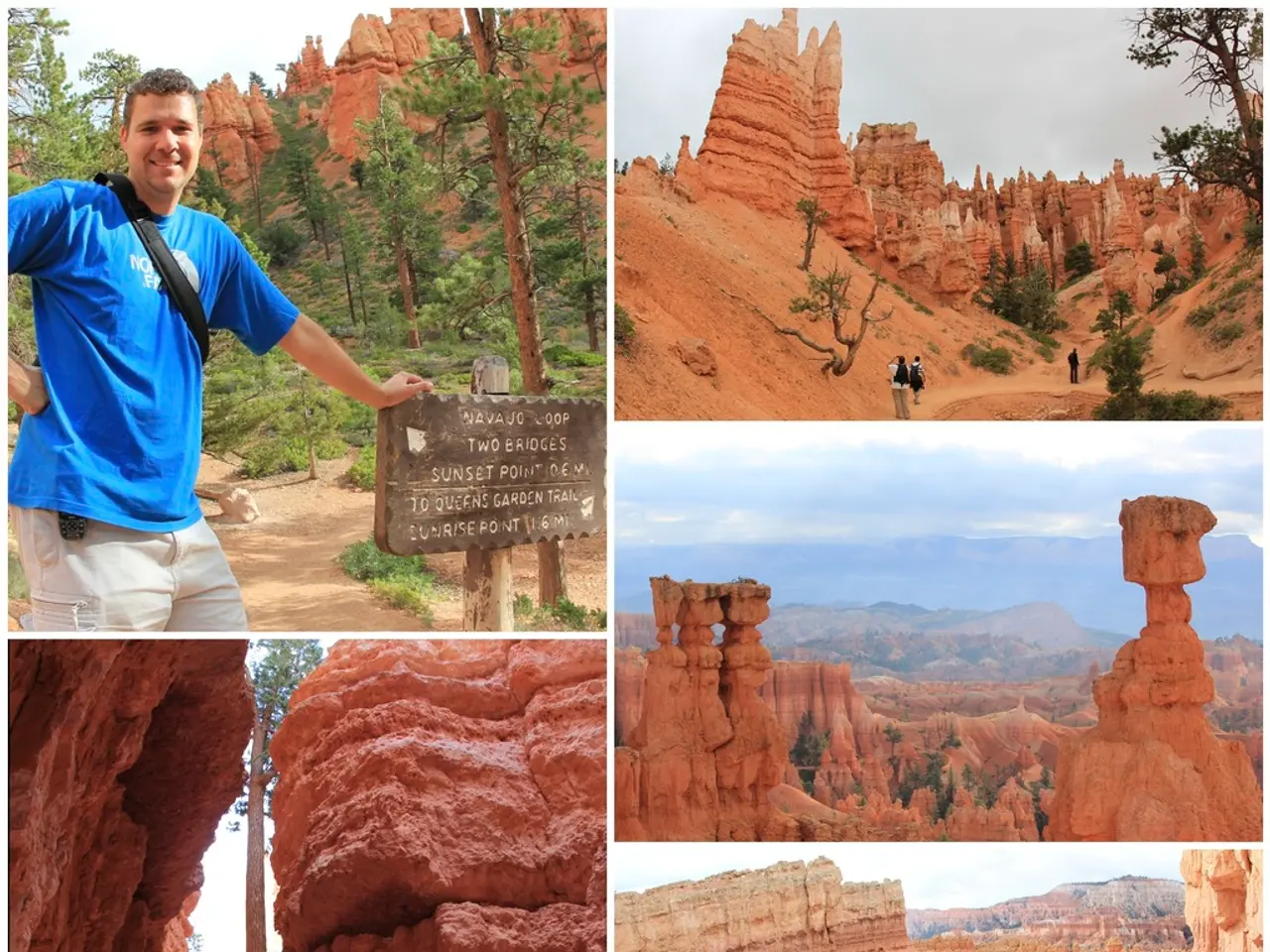Strategies for Chronicling Regional Heritage with Photography, Establishing an Enduring Legacy
In today's fast-paced world, it's easy to overlook the rich history and stories that lie hidden within our local natural areas. By combining ecological, cultural, and historical perspectives, you can transform your nature photography projects into a captivating exploration of your neighborhood's past.
One of the first steps is to delve into the local natural history and ecological resources. By understanding the species, habitats, and landscape processes in your area, you'll gain insights into the scenes you might capture. Visit local nature preserves, parks, and conservation lands to look for interpretive signage or visitor centers. Reach out to local universities or ecological research stations for studies conducted in your area, and review publicly available research permits or scientific studies at well-studied natural areas.
Another crucial aspect is consulting local archives, libraries, and historical societies. These repositories often contain documents, maps, photographs, and oral histories that shed light on the human history and use of nearby natural spaces. For example, research centers associated with parks (like Yellowstone’s Heritage and Research Center) provide extensive historical and scientific background.
Engaging with Indigenous and Tribal knowledge is also essential. Indigenous communities often hold deep historical and cultural knowledge about local landscapes. Community-based or participatory research approaches, which respect sovereignty and emphasize partnership, can help you access Indigenous ways of knowing and histories relevant to your natural areas.
Organizations involved in land protection or restoration, such as The Nature Conservancy’s local preserves, often document the flora, fauna, and ecological significance of sites, including historical land use and changes over time. By collaborating with these institutions, you can create educational displays that combine contemporary images with historical photographs, maps, and documents.
Photographing historic structures within natural settings can emphasize nature's gradual reclamation process while preserving architectural details. Stone walls, terraced hillsides, old foundations, and remnants of roads or paths indicate past land use and settlement patterns. These relics of the past can provide a unique backdrop for your photographs.
Your nature photography collection becomes a lasting historical document with proper organization and preservation. Contact local museums, historical societies, and libraries to discuss donating or licensing your photographs for their collections. Comparing current conditions with historical photographs from local archives reveals environmental changes, making your work even more impactful.
Local natural spaces hold centuries of historical narratives that can be captured through photography. Natural landmarks like ancient trees, rocks, and waterways hold the key to understanding the community’s evolution alongside its environment. Long-time residents and community elders can provide context and personal stories about natural landmarks, seasonal patterns, and environmental changes.
Community gardens flourishing in former industrial sites demonstrate adaptive reuse of historically important natural spaces. Active farming operations using century-old techniques offer connections to local agricultural heritage. Walking trails following old logging roads or railway corridors connect recreational activities to economic history.
By following these steps and combining scientific, historical, and cultural perspectives, you can develop a rich understanding of your neighborhood’s natural areas that will enhance the depth and meaning of your nature photography projects. So, grab your camera and embark on a journey to uncover the hidden stories in your own backyard!
- To complement your nature photography with a historical perspective, explore local libraries, archives, and historical societies for documents, maps, photographs, and oral histories about the human history and use of nearby natural spaces.
- For a deeper understanding of your local natural areas, consider engaging with Indigenous and Tribal communities to access their unique knowledge about the landscape's history and cultural significance.
- To create educational displays for your nature photography projects, collaborate with organizations involved in land protection or restoration, as they often document the ecological and historical features of local sites.
- Preserve the historical value of your nature photography collection by contacting local museums, historical societies, and libraries to discuss donating or licensing your photographs for their collections, which will contribute to a valuable record of environmental change.




